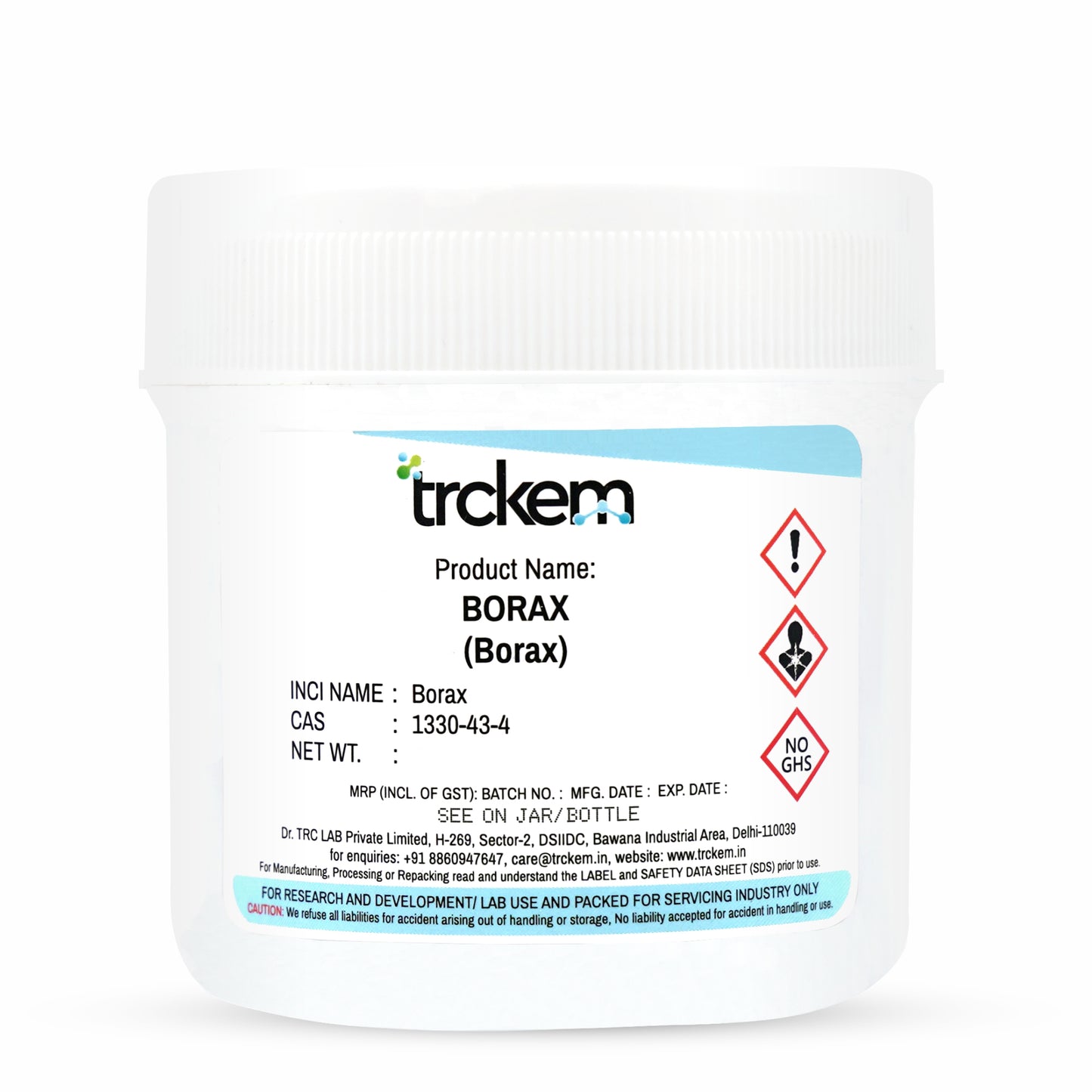
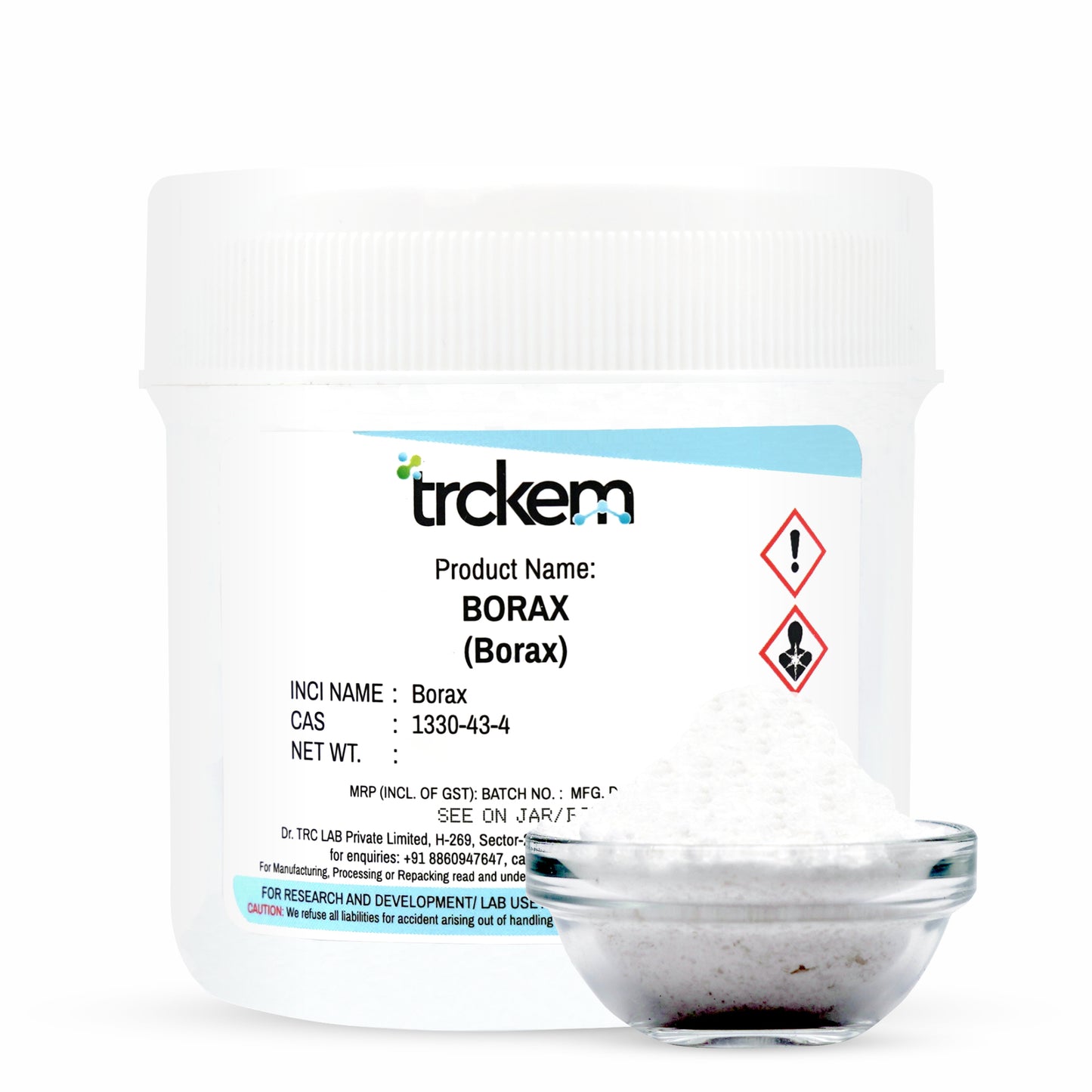
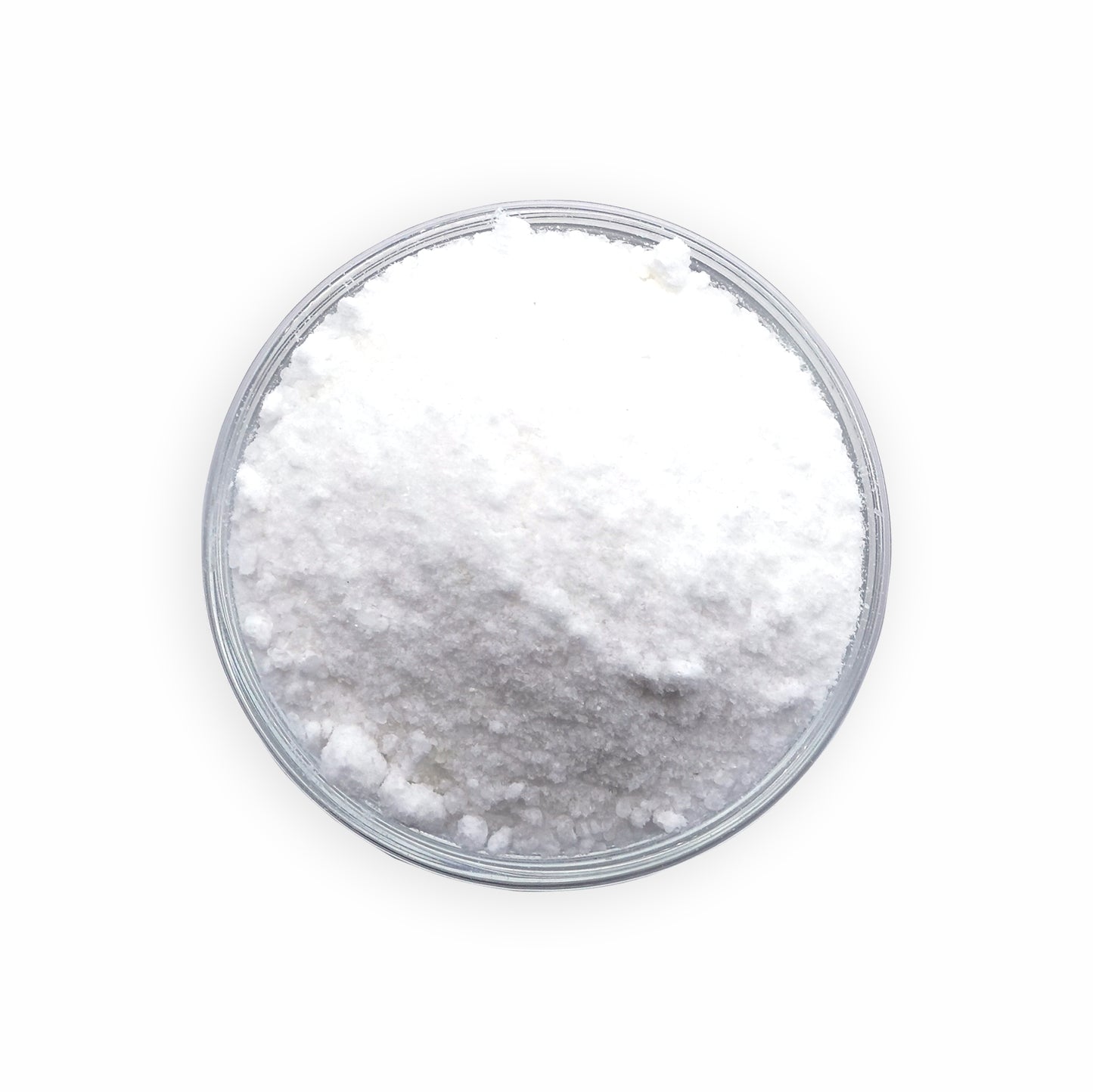
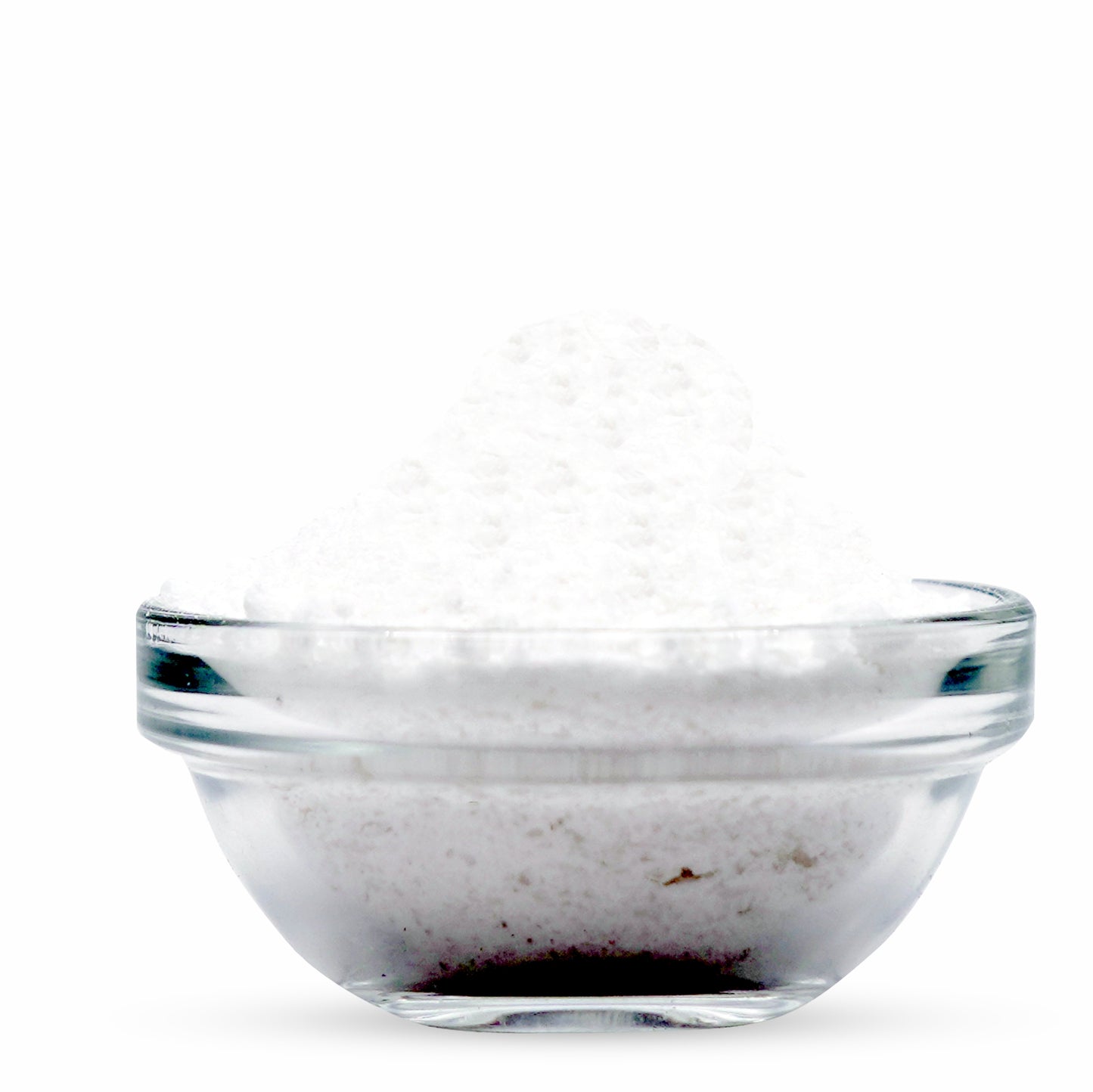
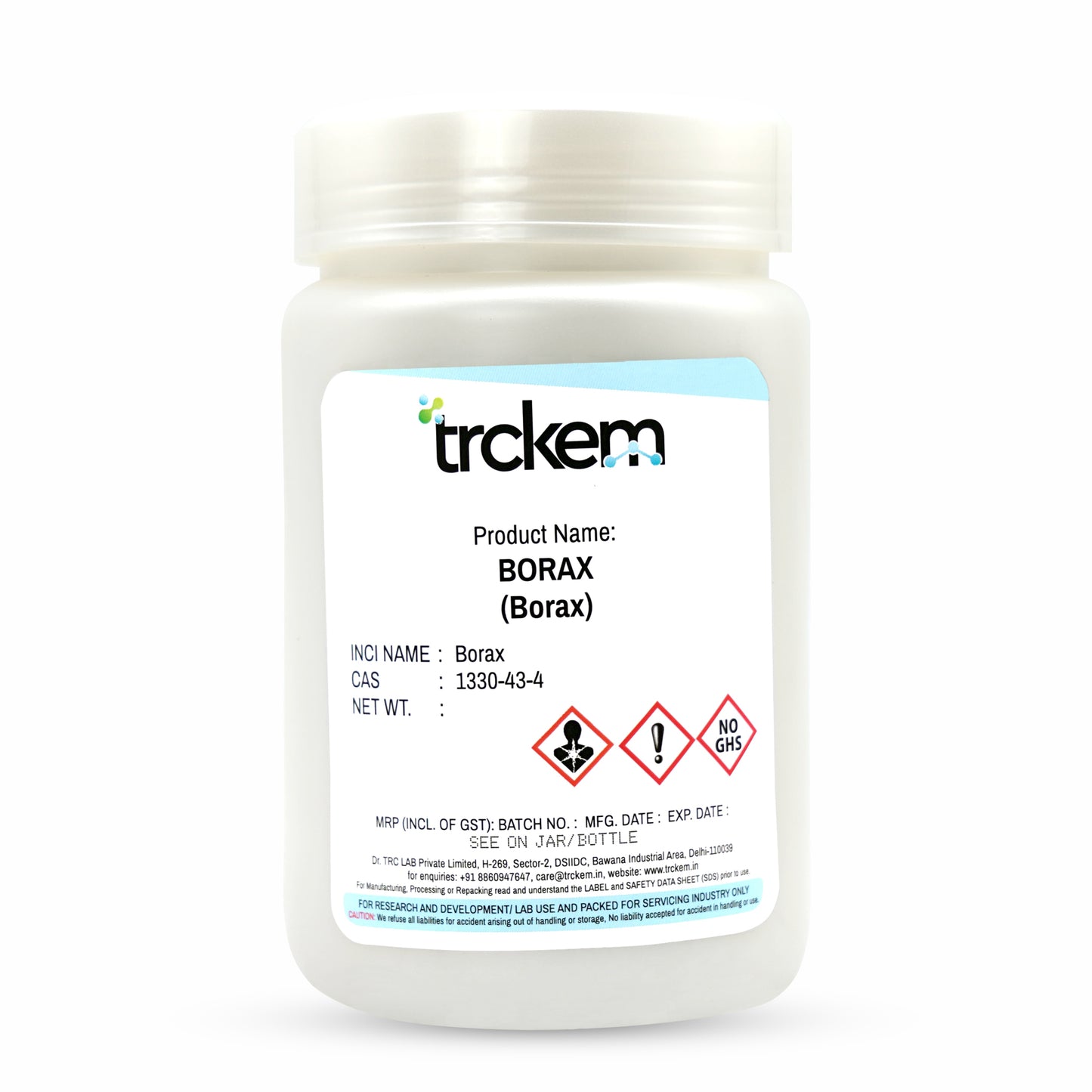
THE STORY OF BORAX

Borax: The Classic pH Buffer & Emulsifier Aid
Borax (Sodium Tetraborate) is a multifunctional mineral ingredient used in cosmetics as a pH adjuster, stabilizer, and emulsification helper. Historically used in creams, lotions, bath salts, and personal-care cleansing products, it supports product stability, texture, and mild preservative action in alkaline systems.

Naturally Mined Mineral, Refined for Industrial & Cosmetic Purity
Borax is sourced from natural deposits (most famously in California, Turkey, China) and processed through dissolving, crystallization, and filtration to produce high-purity disodium tetraborate decahydrate or pentahydrate. TRCkem supplies cosmetic and technical grades depending on formulation needs.

Stabilize. Buffer. Support Emulsions.
Functional roles in cosmetic & personal-care formulations:
✅ Helps control pH and maintain alkaline stability
✅ Works as a co-emulsifier with fatty acids (e.g., beeswax + borax classic cream system)
✅ Provides softening & water-conditioning effects in bath and cleansing formulas
✅ Offers mild antimicrobial support in high-pH formulas
Traditionally found in: cold creams, cleansing milks, emulsified ointments, bath salts, and soap bars.

Regulated Use – Allowed in Limited Categories OnlyA
Typical usage level: 0.1–3% depending on type of emulsion or cleansing system.
Borax is restricted in many regions due to classification as a “reprotoxic” substance at high doses → not permitted in leave-on EU cosmetics, but still used in certain rinse-off and non-skin-contact formulations.
pH range: works best in systems pH 7–9.
Must be stored dry, sealed, away from moisture.
Always check regional regulatory status before use (EU, FDA, ASEAN may vary by category).
Formulator’s Queries, We Answered
1. What is the CAS number and INCI name of borax?
The Chemical Abstracts Service (CAS) numbers for borax are 1303-96-4 (decahydrate) and 1330-43-4 (anhydrous). The International Nomenclature of Cosmetic Ingredients (INCI) name for borax is Sodium Borate.
2. What is borax?
Borax is a white or colorless crystalline mineral composed of sodium, boron, oxygen, and water, with the chemical formula Na₂B₄O₇·10H₂O. It is commonly used in various industrial and household applications, including as a buffering agent in cosmetics.
3. What functions does borax serve in personal care products?
In cosmetics and personal care formulations, borax serves multiple functions:
Buffering Agent: Helps maintain and stabilize the pH levels of products.
Emulsifying Agent: Assists in blending oil and water components to form stable emulsions.
Preservative: Provides mild antiseptic properties, contributing to product preservation.
Collapsible row
4. In which personal care products is borax commonly used?
Borax is utilized in a variety of personal care products, including:
Creams and Lotions: Acts as an emulsifier to maintain product consistency.
Shampoos: Serves as a buffering agent to stabilize pH levels.
Mouthwashes: Provides antiseptic properties to enhance oral hygiene.
5. Is borax safe for use in personal care products?
Borax is subject to regulatory guidelines due to concerns over potential reproductive toxicity. Its use in cosmetics is restricted in certain regions, and it is classified as a regulated ingredient. Manufacturers must adhere to specific concentration limits and safety assessments when incorporating borax into personal care products.
6. Are there any precautions to consider when using products containing borax?
Consumers should be aware of the regulatory status of borax in their region and follow usage instructions provided by manufacturers. Individuals with sensitive skin or specific health concerns should consult with a healthcare professional before using products containing borax.







